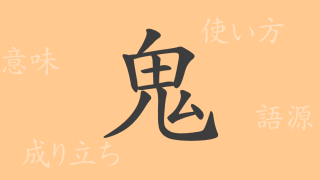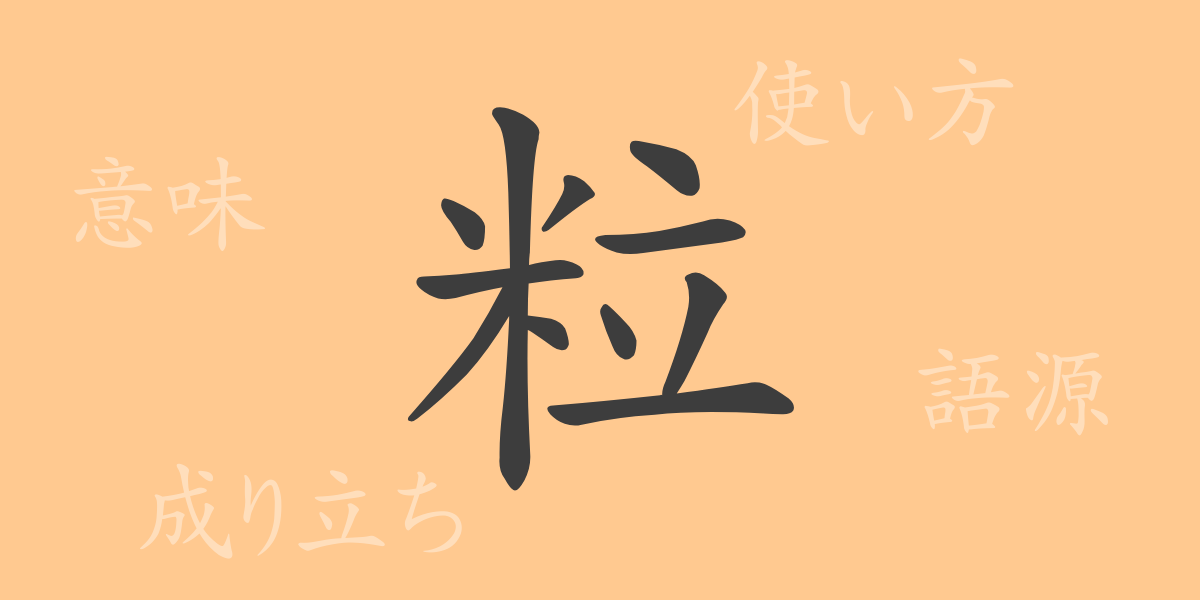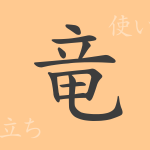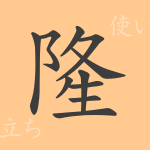In Japanese culture, kanji (かんじ) characters are an indispensable element. Among them, the kanji character “粒” (つぶ, tsubu) is used in various aspects of our daily lives. This article delves into the origins, meanings, and uses of the kanji “粒” (つぶ, tsubu), as well as its presence in idioms and proverbs, exploring the profound depth it holds. Let’s explore the world of “粒” (つぶ, tsubu), which symbolizes the beauty of the Japanese language.
The Origin of 粒 (つぶ, tsubu)
The kanji “粒” (つぶ, tsubu) is composed of “米” (こめ, kome), which represents rice, and “立” (りつ, ritsu), which means small objects. This combination gives rise to the meaning of small, grain-like objects. Historically, it is believed to have represented small units of tangible substances, reminiscent of grains of cereal.
The Meaning and Usage of 粒 (つぶ, tsubu)
“粒” (つぶ, tsubu) refers to small pieces or lumps of solid matter. Generally, it is used to describe small, round objects like grains of rice, but it can also be used metaphorically. For example, describing a standout individual in a group as “粒が揃っている” (つぶがそろっている, tsubu ga sorotteiru) showcases its diverse usage.
Reading, Stroke Count, and Radical of 粒 (つぶ, tsubu)
The kanji “粒” (つぶ, tsubu) contains various pieces of information:
- Reading: In on’yomi (音読み, Chinese reading), it is read as “リュウ” (りゅう, ryuu), and in kun’yomi (訓読み, Japanese reading), it is read as “つぶ” (つぶ, tsubu).
- Stroke Count: The kanji “粒” (つぶ, tsubu) consists of 11 strokes.
- Radical: The radical is “米” (こめへん, komehen), which means rice.
Idioms, Proverbs, and Expressions Using 粒 (つぶ, tsubu)
Expressions using “粒” (つぶ, tsubu) are abundant, showcasing the breadth of Japanese expression. Here are a few examples:
- 粒選り (つぶより, tsubuyori): Selecting only the best, carefully chosen items.
- 粒揃い (つぶぞろい, tsubuzoroi): Uniformly excellent items, each one of high quality.
- 一粒万倍日 (いちりゅうまんばいび, ichiryuu manbaibi): A day when even a small act of virtue yields great results, or the events held on such a day.
Summary of 粒 (つぶ, tsubu)
The kanji “粒” (つぶ, tsubu) is associated with many things due to its shape and size. From food to human characteristics, and even the concept of time, its applications are diverse. By focusing on just this one kanji, you can appreciate the richness of the Japanese language. If you encounter the kanji “粒” (つぶ, tsubu) in your daily life, take a moment to ponder its deep meanings and background.

























